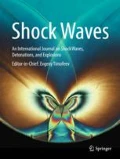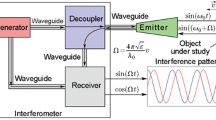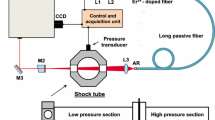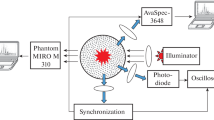Abstract.
The paper describes experimental investigations in a shock tube concerning the formation of new molecules using He as a driver gas and a mixture of Kr, CH\(_4\) and NH\(_3\) as driven gas, where Kr serves as diluant. By microwave absorption technique it was possible to detect HCN, CH\(_2\)O and CH\(_3\)NH\(_2\) as reaction products. Obviously, these molecules were formed in the plasma behind the shock wave. In addition, the “swan bands” of C\(_2\) have been observed with optical methods.
Similar content being viewed by others
Author information
Authors and Affiliations
Additional information
Received 16 November 1997 / Accepted 7 May 1998
Rights and permissions
About this article
Cite this article
Ewert, D., Grönig, H., Olivier, H. et al. Microwave detection of molecules formed by shock wave induced reactions. Shock Waves 8, 385–388 (1998). https://doi.org/10.1007/s001930050132
Issue Date:
DOI: https://doi.org/10.1007/s001930050132




